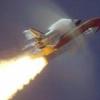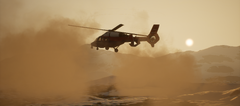- 6 replies
- 2,984 views
- Add Reply
- 19 replies
- 4,218 views
- Add Reply
- 10 replies
- 3,622 views
- Add Reply
- 7 replies
- 4,773 views
- Add Reply
- 1 reply
- 2,865 views
- Add Reply
- 6 replies
- 3,766 views
- Add Reply
Open beta of DCS: UH-1H Huey 1.2.4 Released

By Dave,


The UH-1 Iroquois, better known as the Huey, is one of the most iconic helicopters in the world. Indispensable in the Vietnam War, the Huey continues to serve in both military and civilian roles around the globe today. DCS: UH-1H features an updated model of the helicopter armed with rockets, gatling guns, and door gunner machine guns. The simulation offers both extreme realism in its flight and systems modeling as well as a variety of options to reduce the learning curve for new players, includ
DCS 1.2.4 Available

By Dave,
DCS 1.2.4 Available
Today we are happy to make available version 1.2.4 of DCS World and updates to several DCS modules.
Download installer files here: http://www.digitalcombatsimulator.co...roduct&lang=en
- or -
Use Auto Updater. To force an auto update, from the Start menu, select Eagle Dynamics - DCS World - Update DCS world
In addition to many new features and fixes, 1.2.4 adds support to the new DCS: UH-1H Huey module.
New Features
• AI Fw-190D9 with mult
Arma 3 Alpha Available on Steam

By JediMaster,
[fimg=left]http://www.arma3.com/images/post_thumbs/arma3_alpha.jpg[/fimg]For those of us who have enjoyed playing OFP, Arma, Arma 2, and Arma 2: Operation Arrowhead over the past decade, today BIS released a playable alpha version of Arma 3 on Steam.
It features the smaller of the 2 islands that the final version will ship with, a few single player scenarios, the mission editor, and multiplayer.
Steam Arma 3 page: http://store.steampo...com/app/107410/
BIS page: http://www.arma3.
Amazing photo of Geneseo Air Show tri-plane crash.

By Erik,
[fimg=left]http://combatace.com/uploads/sml_gallery_1_8_62805.jpg[/fimg] A Geneseo Air Show spectator from New Jersey caught this dramatic photo of a Fokker DR-1 tri-plane at the moment of impact into a cornfield near the Geneseo Airport Saturday.
[Read Full Article @ Livingston County News]
July 13, 2011 by Howard W. Appell
.
WINGS Over Flanders Fields - Preview Movie #4

By Erik,
[fimg=left]http://combatace.com/uploads/sml_gallery_1_8_262314.png[/fimg] For your viewing pleasure and to help tide the cold dark days until WOFF is finally upon you. We bring you a few new reveals and goodies in the form of a new movie.
Written earlier and posted by Polovski as a news announcement today in the Over Flanders Fields Forum. We know the anticipation is killing you so keep up to date with the latest developments of WOFF here: LINK TO POST
.
Facebook Integration

By Erik,
[fimg=left]https://fbcdn-photos-a.akamaihd.net/photos-ak-snc7/v27562/73/479134732148929/app_104_479134732148929_1565370897.png[/fimg]For those of us who have Facebook accounts I have added the ability for members to sign-in using Facebook. In addition new and current members can associate their Facebook accounts if they wish to do so. The newly deployed abilities gives Facebook members new abilities and a way to minimize multiple login accounts. New members can use the create login link on the






